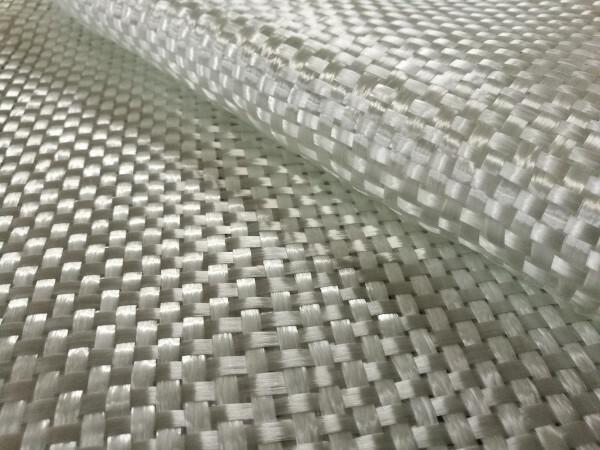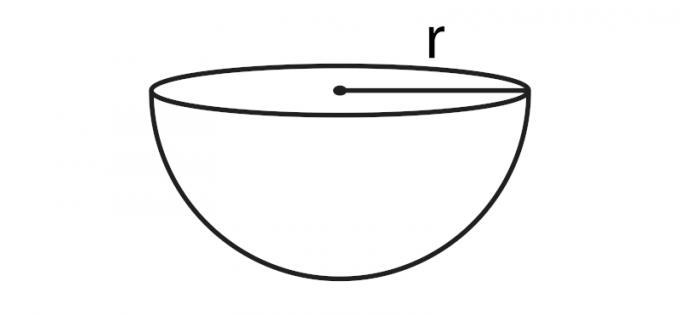Fiberglass It is a fibrous material consisting of thin flexible filaments of glass. It can present several cuts, characteristics and applications. Among the main existing glass fibers (and the most commercialized) is type E, which has low electrical conductivity.
Glass fibers have silica as their main constituent, although they carry several other oxides in their composition, which will have an impact on the final application of the fiber. Textile fibers are produced from molten glass and have been exploited since Ancient Egypt. Its peak use, however, occurred in the 20th century, with wide use in the textile industry and as reinforcement for polymers.
Read too: PET plastic — one of the most widely used synthetic polymers in the world
Topics of this article
- 1 - Summary about fiberglass
- 2 - What is fiberglass?
- 3 - Types of fiberglass
- 4 - What is fiberglass used for?
- 5 - How is fiberglass obtained?
- 6 - How did fiberglass come about?
Summary about fiberglass
- Fiberglass is a material made from thin, flexible glass filaments.
- The types of glass fibers are named according to their properties.
- The best-selling fiberglass is type E.
- The main constituent of fiberglass is silica, SiO2.
- Fiberglass can be used in the textile industry, as a thermal insulator and as reinforcement for polymers.
- This material has been used since ancient Egypt, reaching its peak in the 20th century.
What is fiberglass?
the fiberglass It is a material made by thin flexible filaments of glass. There are several types of fiberglass, which have different characteristics, cuts and applications. The main constituent of fiberglass is silica, SiO2, although other elements can also be very important in the composition of the resulting fiberglass.
Do not stop now... There's more after the publicity ;)
types of fiberglass
Types of fiberglass are named according to their specific properties:
- AND (electrical) – low electrical conductivity;
- s (strength) – great mechanical resistance;
- W (chemical) – great chemical resistance;
- M (module) – high elasticity;
- A (alkali) – high alkali metal composition;
- D (dielectric) – low dielectric constant;
- AIR (alkali resistant) – high alkaline resistance.
Most of the glass fibers currently produced, about 90%, is type E. Below is a table containing the approximate chemical composition of the main types of glass fibers.
Approximate chemical composition of glass fibers (by types) | |||||||
Constituent |
AND |
s |
W |
M |
A |
D |
AIR |
SiO2 |
52-56 |
60-65 |
65 |
53,5 |
71,8 |
72-75 |
58,3-60,6 |
B2O3 |
4-6 |
- |
5 |
- |
- |
21-24 |
- |
Al2O3 |
12-15 |
23-35 |
4 |
- |
1 |
0-1 |
0,2 |
Dog |
21-23 |
0-9 |
14 |
13 |
8,8 |
0-1 |
- |
MgO |
0,4-4 |
6-11 |
3 |
9 |
3,8 |
0,5-0,6 |
- |
ZnO |
- |
- |
- |
- |
- |
- |
- |
Uncle2 |
- |
- |
- |
- |
- |
- |
0-2,8 |
ZrO2 |
0,2-0,5 |
0-1 |
- |
2,0 |
- |
- |
18,1-21,2 |
At2O |
0-1 |
0-0,1 |
8,5 |
- |
13,6 |
0,4 |
13,0-14,1 |
K2O |
0-0,2 |
- |
- |
- |
0,6 |
0,4 |
0-2,8 |
read2O |
- |
- |
- |
3,0 |
- |
- |
- |
Faith2O3 |
0,2-0,5 |
0-0,1 |
0,3 |
0,5 |
0,5 |
0,3 |
- |
F2 |
0,2-0,7 |
- |
- |
- |
- |
- |
- |
See too: Silicon — the main constituent of glass, ceramics and silicone
What is fiberglass used for?
As for their applications, glass fibers can be used in various industrial fields. One of its main applications is in the production of composite materials, in which fiberglass is used. to reinforce polymers.

Data indicate that, in 2017, more than 1 million tons of fiberglass reinforced plastic was produced in Europe, where they are usually intended for construction and transport. Glass fibers can behave like resistant materials, such as steel, in addition to being light (density in the range of 2.5 g.cm-3) and have corrosion resistance.
Glass fibers also play an important role for filtration and insulation (thermal or acoustic). The thermal performance of fiberglass is related not only to the low thermal conductivity of the glass but also to the low density of the material, which allows the mass of air to be trapped, thus providing insulating properties, with the fiber providing the structure.

For filtration, the surface area of the fibers as well as the size of the spaces between them are important factors. The way to manufacture the fiber with the right diameter can enhance the filtering and insulating aspects of this material.
How is fiberglass obtained?
They exist two processes main sources for the production of fiberglass. One of them is the manufacture of fiberglass wool., used for thermal insulation. In this process, a stream of molten glass is dried in a rotating machine, which consists of a circular metallic container with holes in the wall, rotating at a speed of 2000-3000 RPM and a temperature of 900-1100 °C.
The glass streams that come out of the swivel are stopped by high-speed air currents that transform them into fine fibers (with a diameter of less than 10 µm), with a length of several centimeters.
Another way of producing fiberglass isthrough the continuous process. Here, the objective is to produce filaments with the purpose of reinforcement, with a small diameter (between 9-25 µm). With regard to length, Fibers are usually produced in bundles with yarns (a collection of hundreds to thousands of fibers) about 10 km long.

In this process, molten glass passes through very fine holes in a platinum (or rhodium) plate through extrusion. Glass comes out of the holes with a temperature in the range of 1150-1300 °C, depending on the chemical composition of the material. It is common to use water vapor and pure air to cool the glass that comes out of the holes. The fibers are withdrawn at a speed of 1000 m/min or even more.
Know more: Kevlar — the synthetic fiber stronger than steel
How did fiberglass come about?
The possibility of obtaining glass fibers has been known since ancient times, even before glassblowing techniques were known. Many Egyptian vases were made by wrapping glass fibers in clay properly.
The textile industry's interest in fiberglass emerged much later. the french physicist René-Antoine Ferchault de Réaumur produced, in 1713, fabrics decorated with fine threads of glass. A famous but rare use of fiberglass at the beginning of its relationship with the textile industry was when it was used for the manufacture of a dress worn by an actress, in 1893, at the Columbian Exposition in Chicago to attract attention at an exhibition of glasses.
Fiberglass manufacturing processes in the current molds began in the first half of the 20th century. The manufacture of glass textile fibers by the method in which they are passed through fine holes began in the 1930s in the United States, beginning in 1939 in Germany. As early as 1939, thanks to the efforts of the Owens-Illinois Glass Co., of Newark, Ohio, USA, the fiberglass manufacturing process has been improved, making it significantly more viable in economic terms.
Despite expansion during the remainder of the 20th century, in the 1990s, the industry began to decline, requiring ways of rationalization by the sector, getting rid of obsolete machinery and installations, which made small producers almost completely disappear.
Currently, the fiberglass industry seeks greater mechanization, reducing labor costs and using less energy. most of small companies have been merged into the share of large producers.
image credit
[1] humphery/ Shutterstock
Sources
MARTYNOVA, E.; CEBULLA, H. Glass Fibers. In: Inorganic and Composite Fibers: Production, properties, and applications. Cap. 7. P. 131-163. United Kingdom: Elsevier, 2018.
JONES, F. R.; HUFF, N. T. Structure and properties of glass fibers. In: Handbook of Tensile Properties of Textile and Technical Fibers. Cap. 15. P. 529-573. Cambridge, UK: Woodhead Publishing Limited, 2009.
JONES, F. R. Glass fibers. In: High-performance Fibers. Cap. 6. P. 191-238. Cambridge, UK: Woodhead Publishing Limited, 2001.
By Stefano Araujo Novais
Chemistry teacher
Click and learn all about the material up to seven times more resistant than steel, Kevlar!
Understand what glass is, that is, its chemical composition and state of aggregation.
Read this text to find out if glass is solid or liquid, in addition to understanding the definition of amorphous solid and glass transition temperature.
Click here, learn about the main characteristics of PET plastic, learn about its applications and find out how it is made and how it is recycled.
Meet green plastic, a biopolymer that promises to help reduce the problem of garbage accumulation by plastics.
Learn everything about polymers, from obtaining to the diversity of uses.
Influence of temperature on plastic materials.
Have you ever heard of the chemical element silicon? Click here and learn about its properties, characteristics, ways of obtaining, applications and history.
Classification of glass according to nature and composition.



